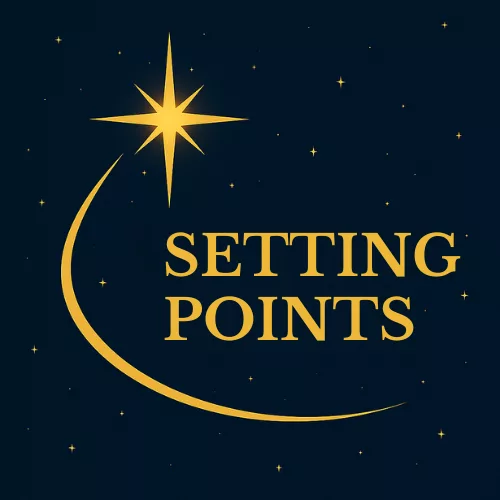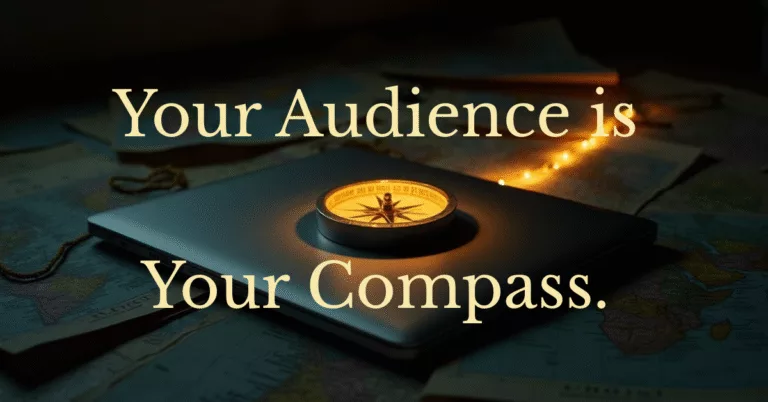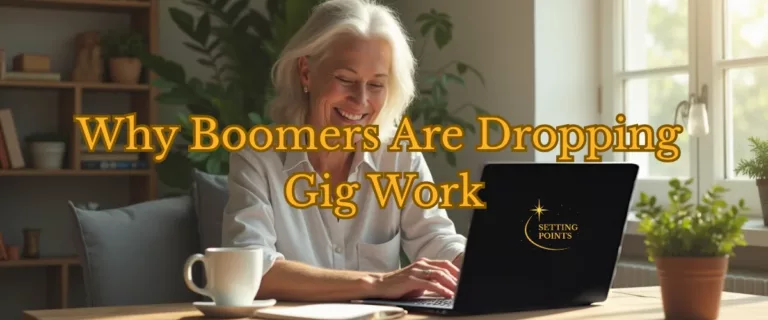Niche blogging is the art of helping people get what they want when they land on your post. Visitors come to your site searching for answers. When you answer their need, you need to make sure that obtaining your solution is quick, painless, and satisfying. The more people you help, the more money you make.
You start thinking, I want to help everyone!
Writing for “everyone” becomes very tempting. I’ve found that casting too wide a net rarely creates the connections that I want. I know that Ball Python Breeding is a powerful niche garnering $100s of thousands of dollars every year. So you think, If Ball Python Breeding is great, you expand into Reptile Breeding.
Bigger is better right?
In 2025, large blogs with broader targets are finding it harder to build loyal audiences. You were the python breeder. People followed your advice. But what do you know about Box Turtles? Nothing much, so you have Chatty create your posts. Those posts have lost the “You Do You” element that your audience came to trust.
More and more, both search engines and readers are picking blogs that are personal and specific over those with general topics. Building a focused blog gives you and your audience clarity, makes relationships with readers stronger, and brings better results.
Here, I’ll help you figure out exactly who you’re helping with your blog and why getting specific is so important.

Why Knowing Your Niche Audience Matters
When I talk about a niche audience, I’m referring to a clearly defined group of people who share similar traits, needs, or interests. It’s not simply picking a “topic,” such as “cooking,” but understanding which slice of that group I really want to help. For example, do I want to reach time-strapped parents or fans of gluten-free desserts?
Niche Audience is All About the “Who,” not the “What.”
When you follow the Amazing Niche Master Process and drill down to a specific niche, this does more than simplify your writing process. You are at a level where people understand that you are talking from experience. It helps you build their trust. I can speak their language, and I care about their issues.
You are not able to do this if you have spread yourself too thin. Stay in your lane, and they are going to return and share your work with others. Communities like Smitten Kitchen thrive because they’ve defined who they’re speaking to. I keep an eye on successful resources such as Semrush, Backlinko, and Exploding Topics, using tools like Google Search Console to track keyword growth and interests.
Niche clarity brings loyal fans and true authority.
Finding Out Who I Really Want to Help
Everyone is out of the question. How many people do you know who cringe at the idea of snakes? Nail down your ideal reader by looking at what problems weigh on them, what lights them up, and where they’re willing to spend their money, time, or focus. When you are the niche, YOU ARE YOUR AUDIENCE! This is the largest reason why my book is the niche selection bible. There are so many reasons not to pick from a niche list. This is just another one of them.
If your niche is patio living, live on your patio. Look at everything you can do to enhance your patio. As you do, you can promote the products that you would love to have on your patio. The enthusiasm that you have for your new outdoor sound system comes through your post.
I Picked From A List ?!?!?
All is not lost. I have a solution for you as well. Think about your niche like this:
- What issues are readers trying to solve?
- What are your readers trying to learn?
- What are they looking for: entertainment, instructions, or solutions?
Now, consider both “demographics” (age, background, location) and “psychographics” (dreams, values, lifestyles).
AI will help you here. Ask Chatty, my chosen nice is [topic], I want to be relevant in this niche. Dig into high value keywords like “target audience,” “reader persona,” “audience research,” and “content targeting” and sketch out who fits best.
MrDon
Trust But Verify
Are these keywords showing up on Google Analytics, AnswerThePublic, Reddit, and smaller internet communities? This will show me what folks in my potential audience are searching for and chatting about. Noticing trends such as “budget travel for solo women” tells me there’s a concrete audience. Instead of aiming at “travel,” I zero in on that specific group and better serve them.
The Three Ps: My Go-To Framework for Picking a Niche
To get even clearer, I use what I call the Three Ps:
- Passion: What can I write about and enjoy, even if I hit a rough patch?
- Proficiency: Where do my skills or experiences help others move forward?
- People: Is there an active group searching for stories and answers here?
The sweet spot is where all three overlap. Say I love home gardening, know how to grow balcony plants, and urban dwellers want guidance on sprouting herbs on small patios. That’s my zone. Plenty of people ask, “How do I choose a blog niche?” or “How do I know my blog’s audience?” These three points always guide my answer.
How I Test My Niche Before Going All In
Before dedicating piles of time to building out a blog, I recommend running a few experiments. I test by writing a batch of posts or short newsletters—the MVP (Minimum Viable Product) method works well. I pay attention to how readers respond: Do they leave comments, share posts, or reply to emails? If things are too quiet, I look for small adjustments. Maybe the focus is off or my approach isn’t resonating yet.
Trying out Substack, Medium, or quick YouTube Shorts lets me experiment while keeping setup simple. Instagram Insights delivers rapid feedback on what sticks. I avoid getting distracted by fleeting trends and focus instead on ongoing problems or interests. Content that solves meaningful issues always performs better than chasing “what’s hot” for a week.
What Success Looks Like: Niche Audience Case Studies
I’m always inspired by blogs that have made waves through clear audience focus. Take Elle Does Paris Week: it started with DEior Fashion in mind, blending fashion with French lifestyle and making sure readers felt included, not ignored. The personal tone there really resonates.
Smitten Kitchen provides more proof. Deb Perelman centers on home cooks who want recipes to be doable, comforting, and special. Readers often mention it feels as if she wrote each post for their exact needs—whether they cook for picky kids, tackle meals in tiny kitchens, or genuinely enjoy homemade food.
Niche Alchemy is an affiliate blog weaving product recommendations with creative storytelling, all for people keen on finding value and building meaning. The point? The best blogs don’t shoot for “everyone.” They focus and tailor every step to their people. Audience clarity influences content strategy, community-building, and overall growth for the long haul.
Tools and Tactics I Use to Stay On Track
Keeping up with my audience means using persona mapping worksheets to jot down habits, wants, and burning questions of the people I hope to help. Polls or fast surveys are a big help, but often, a simple email reply gets even more out of readers—especially in older age groups.
SEO tools let me double-check there’s enough interest and that I’m not up against impossible competition. I set aside time to think about what makes a reader feel “seen” and “gotten,” building a sort of “emotional infrastructure” for my blog. Using real stories, familiar phrases, and values my readers hold close creates that connection. With this approach, engagement rises steadily and naturally.
Your Niche Audience Is the Heart of Your Blog
Focusing my blog around a well-defined audience always beats trying to chase big numbers. Readers I actually help become my compass. They guide what I post, how I communicate, and where the site grows. If I can’t summarize who I help in one honest sentence, then it’s back to the drawing board and more research.
Try this: Write out who you want to help, the biggest challenge that’s in their way, and why you’re the right fit to solve it. Nailing this gives your blog a solid foundation. If you want to make it easier to get specific, check out the Setting Points worksheet called “Who Are You Helping?” for your next steps.
Bonus Resources for Mastering Niche Blogging
- Persona builder worksheet (free download)
- The Amazing Niche Master Workbook
FAQ: Niche Blogging and Defining Your Audience
Question: What’s the fastest way to define my blog’s target audience?
Answer: I suggest spelling out your reader in vivid detail, then testing your hunch with a real poll or MVP post. Watch the reactions and reshape your approach as needed.
Question: Can niche blogs ever get “too narrow”?
Answer: Occasionally, but more often than not, there are plenty in even the smallest groups. Meeting a real need usually means there’s someone searching for help.
Question: What tools should I start with to stumble upon my niche?
Answer: Begin with Google Analytics, AnswerThePublic, and dig around in niche forums. Want to get hands-on? Try simple surveys or persona worksheets for early clarity.
Entities & LSI Keywords Used
Semrush, Backlinko, Blogbuster.so, Smitten Kitchen, Exploding Topics, Substack, Medium, YouTube Shorts, Instagram Insights, Google Analytics, Google Search Console, persona mapping, target audience, ideal customer profile, content targeting, blog segmentation, audience research.








